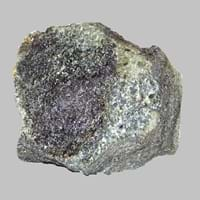Definition
Aplite is a fine-grained granite composed mainly of feldspar and quartz
Amphibolite can be defined as a granular metamorphic rock which mainly consist of hornblende and plagioclase
Discoverer
Unknown
Alexandre Brongniart
Etymology
From German Aplit, from Greek haploos simple + -ite
From Amphibole + -ite
Class
Igneous Rocks
Metamorphic Rocks
Sub-Class
Durable Rock, Hard Rock
Durable Rock, Hard Rock
Group
Plutonic
Not Applicable
Other Categories
Fine Grained Rock, Opaque Rock
Coarse Grained Rock, Medium Grained Rock, Opaque Rock
Texture
Granular, Graphic
Banded, Foliated, Massive
Color
Black, Grey, Orange, Pink, White
Black, Brown, Green, Grey
Durability
Durable
Durable
Scratch Resistant
Yes
Yes
Appearance
Veined or Pebbled
Foliated
Interior Uses
Bathrooms, Countertops, Decorative Aggregates, Entryways, Floor Tiles, Homes, Hotels, Kitchens, Stair Treads
Countertops, Decorative Aggregates, Entryways, Floor Tiles, Flooring, Homes, Hotels, Kitchens
Exterior Uses
As Building Stone, As Facing Stone, Bridges, Paving Stone, Near Swimming Pools, Office Buildings, Resorts
As Building Stone, As Facing Stone, Paving Stone, Office Buildings
Other Architectural Uses
Curbing
Curbing
Construction Industry
As Dimension Stone
As Dimension Stone, Building houses or walls, Cobblestones, Construction Aggregate, for Road Aggregate, Landscaping, Production of Glass and Ceramics, Roadstone
Medical Industry
Not Yet Used
Not Yet Used
Antiquity Uses
Artifacts, Monuments, Sculpture, Small Figurines
Artifacts, Sculpture, Small Figurines
Commercial Uses
Curling, Gemstone, Laboratory bench tops, Small Sculptures, Tombstones
Cemetery Markers, Commemorative Tablets, Creating Artwork
Types
Not Available
Hornblendite
Features
Available in lots of colors, Available in Lots of Colors and Patterns, Is one of the oldest rock
Clasts are smooth to touch, Matrix variable, Surfaces are often shiny
Archaeological Significance
Famous Monuments
Data Not Available
Data Not Available
Famous Sculptures
Data Not Available
Data Not Available
Pictographs
Not Used
Not Used
Petroglyphs
Not Used
Not Used
Formation
Aplites belong to intrusive igneous rocks which are mostly quart and alkali feldspar and are formed from residual eutectic granitic liquids and represent the final crystallization products of magma.
Amphibolite is a coarse-grained metamorphic rock which forms by metamorphism of mafic igneous rocks like basalt and gabbro or from the metamorphism of clay-rich sedimentary rocks like marl or graywacke.
Mineral Content
Amphibole, Biotite, Feldspar, Hornblade, Micas, Muscovite or Illite, Plagioclase, Pyroxene, Quartz
Amphibole, Andalusite, Biotite, Calcite, Epidote, Garnet, Hornblade, Kyanite, Magnetite, Olivine, Plagioclase, Pyroxene, Staurolite, Wollastonite
Compound Content
Aluminium Oxide, CaO, Iron(III) Oxide, FeO, Potassium Oxide, MgO, MnO, Sodium Oxide, Phosphorus Pentoxide, Silicon Dioxide, Titanium Dioxide
Aluminium Oxide, CaO, Iron(III) Oxide, FeO, Potassium Oxide, MgO, MnO, Sodium Oxide, Phosphorus Pentoxide, Silicon Dioxide, Titanium Dioxide
Types of Metamorphism
Burial Metamorphism, Cataclastic Metamorphism, Hydrothermal Metamorphism, Regional Metamorphism
Not Applicable
Types of Weathering
Chemical Weathering, Mechanical Weathering
Chemical Weathering, Mechanical Weathering
Types of Erosion
Chemical Erosion, Coastal Erosion, Wind Erosion
Chemical Erosion, Glacier Erosion, Sea Erosion, Wind Erosion
Grain Size
Very fine-grained
Medium to Coarse Grained
Fracture
Not Available
Irregular to Conchoidal
Streak
White
White to Grey
Porosity
Less Porous
Less Porous
Luster
Dull to Pearly to Subvitreous
Vitreous to Dull
Compressive Strength
Not Available
Cleavage
Not Available
Irregular
Toughness
Not Available
2.3
Transparency
Opaque
Opaque
Density
2.6 g/cm3
2.85-3.07 g/cm3
Specific Heat Capacity
Not Available
Resistance
Heat Resistant, Wear Resistant
Heat Resistant, Pressure Resistant, Wear Resistant
Deposits in Eastern Continents
Asia
China, India, Iran, Saudi Arabia, Sri Lanka, Taiwan, Thailand, Turkey, Vietnam
Russia, Turkey
Africa
Angola, Egypt, Madagascar, Namibia, Nigeria, South Africa
Burundi, Djibouti, Eritrea, Ethiopia, Kenya, Madagascar, Rwanda, Somalia, South Africa, Sudan, Tanzania, Uganda
Europe
Austria, Belgium, Finland, France, Germany, Italy, Norway, Sardinia, Spain, Switzerland, The Czech Republic, Venezuela
Germany, Greece, Iceland, Norway, Poland
Others
Not Yet Found
Not Yet Found
Deposits in Western Continents
North America
Canada, USA
Canada, USA
South America
Not Yet Found
Brazil
Deposits in Oceania Continent
Australia
Not Yet Found
South Australia, Western Australia










